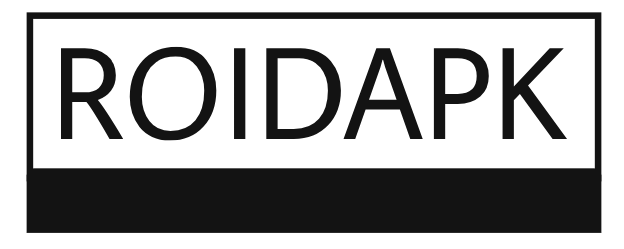A Fleet management solution and analytics are among the most useful add-ons for a company with vehicles in its fleet. Analyzing data and providing insight into how the vehicles are used helps improve vehicle usage by saving time, cutting down costs, and making it safer.
Vehicle Utilization Challenges
1. Maintenance and Repairs: Vehicles should always be in fine working condition; however, it does not if not maintained. Not only is timely maintenance necessary to avoid unexpected breakdowns, but one also has to save time and money when such a problem arises. It keeps track of what each needs and when it requires utmost planning.
2. Fuel Costs: Fuels are one of the major cost components of fleet management. Prices can easily fluctuate, and therefore, are not very predictable in terms of cost. If vehicles are not operated efficiently, it can cause monetary loss.
3. Route Planning: Finding the best routes for the trip can save more time and fuel. However, especially in places where density is high or road changes more frequently than others, it’s hard to find the quickest and most efficient route.
4. Cost Management: Balancing the budget while managing all the costs associated with a fleet is a major task. This includes buying new vehicles, maintaining current ones, and handling unexpected expenses.
How to Overcome Vehicle Utilization With a Fleet Monitoring System
Here are some ways analytics heightens fleet operations:
1. Route Optimization: Analytics can analyze traffic patterns, road conditions, etc., and provide insight into the best routes from where the driver should traverse. To understand it more clearly, let’s say a trip takes an hour. Through a real-time analysis, however, analytics can discover a new route taking only 45 minutes, which in turn can save time and fuel.
2. Predictive Maintenance: Analytics can predict just when the vehicle might need its next service. It provides historical performance data on how the engine has operated and previous service records. It keeps that vehicle from breaking down and costly repairs. For instance, if the analytics system notifies an unusually rising temperature of a vehicle’s engine, it can prompt maintenance before the engine overheats.
3. Fuel efficiency. Fuel is one of the significant costs for a fleet. A Real-time fuel monitoring system and analytics can track fuel consumption and determine habits that waste gas/fuel. For example, if a driver consumes much more fuel compared to other drivers on the same routes. Then, there could be habits like idling for too long periods or an aggressive driving style, which the fleet manager can address.
4. Improving Safety: Analytics help in improving safety by tracking the behavior of the drivers along with other incidents. By analyzing patterns, for example, frequent hard braking or speeding, the managers can identify risky behavior and offer relevant training.
5. Utilization Tracking: Using this, fleet management is also in a position to ensure that each vehicle utilizes its optimal utilization. Analytics provides insight regarding how often the different vehicles are out on the road, avoiding underuse or overuse. A vehicle that spends most of its time parked can be reassigned to busier routes to balance the workload and extend the lifespan of the vehicle.
6. Better Customer Service: Proper maintenance on time as well as truck route optimization can lead to improved delivery times and reliability of trucks. This will contribute to better customer service. It may give such customers accurate delivery windows, which boosts satisfaction and trust.
Types of Software Fleet Tracking Solutions Consist Of
Fleet tracking solution involves overseeing and managing a fleet of vehicles whose users are in business. Now, major companies rely on analytics tools to optimize the usage of their vehicles.
Analytics tools offer different ways by which companies can understand, manage, and optimize their fleets. Here is an overview of the various types of analytics tools applied in fleet management and how they promote efficiency:
- GPS Route Planning Software
GPS tracking systems help in tracking real-time monitoring of each vehicle in the fleet. Not knowing the location of a vehicle is no longer a problem, and the information helps to improve the route. Routes can be improved to become faster or perhaps more cost-saving.
- Telematics Systems
Telematics solutions which is the integration of telecommunications and informatics have been designed to record and report data about vehicle fleets. They include reports on behaviors from the drivers, such as speeds, brake events, and idle hours.
That way, companies can design corresponding training to ensure that drivers keep within safe and efficient driving practices. Safer driving enhances minimal accident occurrences, whereas fuel usage and vehicle wear both decrease with efficient driving.
- Maintenance Management Software
Regular maintenance will ensure that the fleet keeps running in its best condition. This proactive approach reduces downtime, providing vehicles when they are needed. Predictive analytics can also be used to predict when a particular part will fail, thereby preventing on-road breakdowns by replacing parts in due time.
- Asset Management Systems
These systems track the usage of all the vehicles. They include a full report on how each vehicle is used, thus helping identify vehicles underused or overused. Vehicle utilization insight helps managers decide whether the fleet needs to be downsized or vehicles resorted to other locations.
Before You Go!
Analytics for fleet management enhance efficiency hugely in optimizing routes, fuel consumption reduction, and much more to operate the fleet.
In reality, the need for cutting costs, enhancing safety, and maximizing productivity in fleets makes it necessary for companies to use fleet management software.
Fleet Tracking Solutions such as Trackobit help companies operate more efficiently from tracking locations up to fuel and maintenance management. Businesses can therefore save through its advanced features to improve safety, and also improve vehicle utilization.

